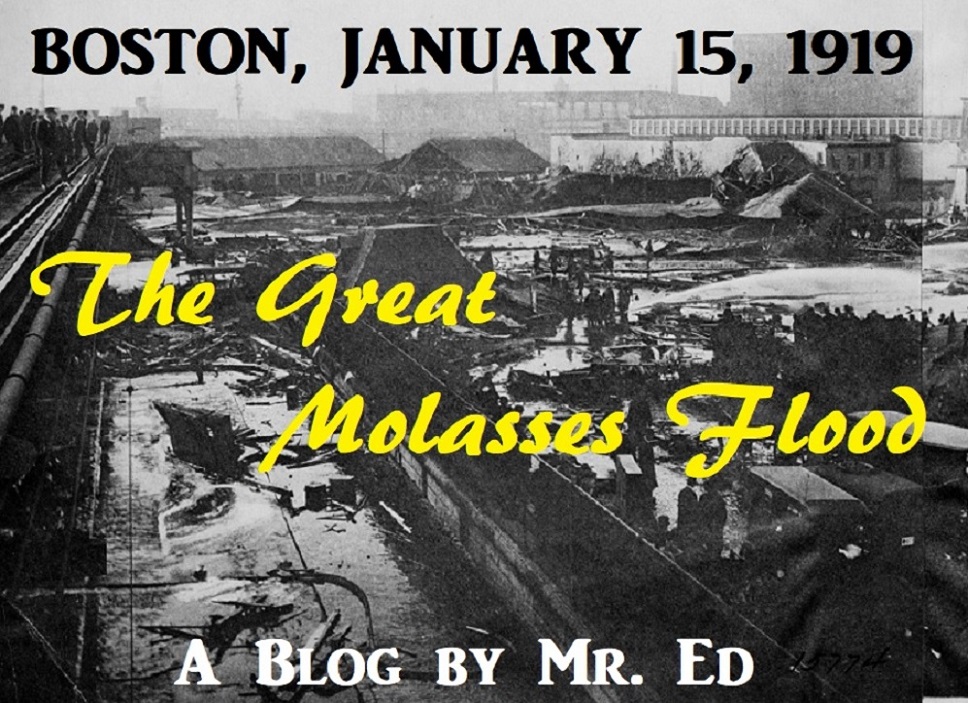The Great Molasses Flood, also known as the Boston Molasses Disaster, or the Boston Molassacre, occurred on January 15, 1919, in the North End neighborhood of Boston, Massachusetts. A large storage tank filled with 2.3 million US gal (8,700 m3) weighing approximately 13,000 short tons (12,000 t) of molasses burst, and the resultant wave of molasses rushed through the streets at an estimated 35 mph (56 km/h), killing 21 and injuring 150. The event entered local folklore and residents claimed for decades afterwards that the area still smelled of molasses on hot summer days.

Twenty one people were killed on Commercial Street in the North End when a tank of molasses ruptured and exploded. An eight foot wave of the syrupy brown liquid moved down Commercial Street at a speed of 35mph. Wreckage of the collapsed tank visible in background, center, next to light colored warehouse. Elevated railway structure visible at far left and the North End Park bathing beach to the far right. A "before" view of the disaster can be seen in this image.
Flood ~
Coverage from The Boston Post
The disaster occurred at the Purity Distilling Company facility at 529 Commercial Street near Keany Square; molasses, which can be fermented to produce ethanol, the active ingredient in alcoholic beverages and a key component in munitions, had been stored there by the company, which used the harborside Commercial Street tank to offload molasses from ships and store it for later transfer by pipeline to the Purity ethanol plant situated between Willow Street and Evereteze Way in Cambridge. The molasses tank stood 50 ft (15 m) tall and 90 ft (27 m) in diameter, and contained as much as 2.3 million US gal (8.7 million L).
